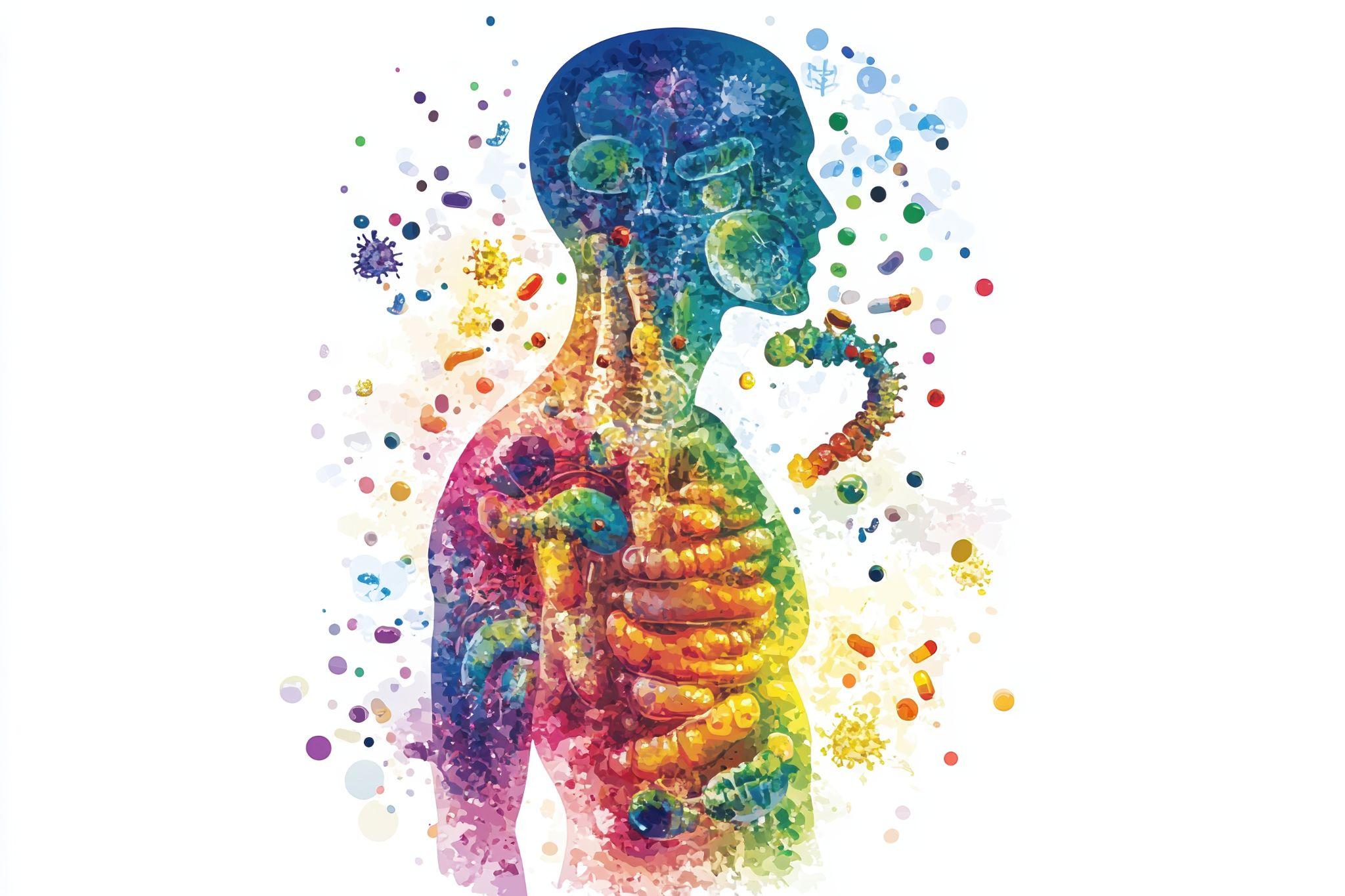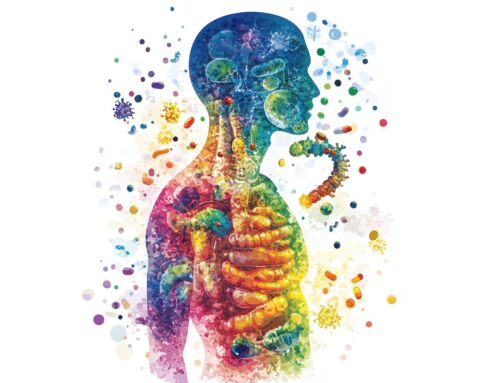How Do Epigenetic Biomarkers Predict Disease & Aging?
Why do some people thrive into their eighties with sharp cognition and resilient health, while others develop cardiovascular disease, memory decline, or autoimmune disorders decades earlier? Why do identical twins, born with the same DNA, often experience vastly different health trajectories? These questions challenge the long-held assumption that genetics alone determines aging and disease.
From Genetics to Epigenetics: Unlocking Health Trajectories
The answer lies in epigenetics, a molecular layer of regulation atop DNA that governs gene expression. While the genetic code itself is fixed, epigenetic processes—such as DNA methylation, histone modifications, chromatin remodeling, and non-coding RNA activity—control whether genes are turned on, silenced, or modulated. These mechanisms influence immune function, metabolism, brain health, and even cancer risk.
Crucially, epigenetic marks are responsive to environmental exposures. Nutrition, chronic stress, toxins, infections, social relationships, sleep quality, and physical activity all leave lasting signatures on the genome. These molecular imprints can either accelerate biological aging or enhance resilience, helping explain why two people with identical DNA may age so differently.
Emerging research shows that these modifications are not just passive reflections of lifestyle—they actively shape disease risk, organ function, and longevity, revealing an underappreciated layer of personalized health. This dynamic, environmentally influenced regulation is central to functional medicine, which integrates modifiable lifestyle factors with genetic potential (1). Collectively, these processes form a responsive network linking the genome to environment and lifestyle.
Epigenetic Clocks: Measuring Biological Age & Health
Among the most promising tools in this field are epigenetic biomarkers, particularly DNA methylation-based “epigenetic clocks.” These instruments quantify cellular and tissue age (referred to as biological age) and predict risk for chronic disease with greater precision than chronological age or traditional clinical markers.
By capturing the cumulative impact of lifestyle, environment, and genetics, epigenetic clocks provide an actionable window into the physiological aging process, bridging molecular biology with preventive and precision medicine.
Biological Age vs. Chronological Age
A key concept in understanding epigenetic biomarkers is the distinction between chronological and biological age. Chronological age reflects the number of years lived, whereas biological age reflects the functional status of cells and organ systems.
A 50-year-old with a biological age of 40 demonstrates slower physiological aging, increased resilience, and lower disease risk. Conversely, a 50-year-old with a biological age of 60 exhibits accelerated cellular decline, increased frailty, and heightened susceptibility to cardiovascular disease, metabolic syndrome, autoimmune disorders, and neurodegeneration (2-3). Even small biological age differences—sometimes as little as 2–3 years—can meaningfully alter lifespan, cognitive reserve, and organ integrity.
DNA Methylation: The Molecular Basis of Biological Age
Among epigenetic mechanisms, DNA methylation (the addition of a methyl group to cytosine residues in CpG dinucleotides) has emerged as the most reliable molecular marker of aging. CpG sites often cluster near gene promoters, controlling whether genes are expressed or silenced. Methylation generally suppresses transcription, while demethylation permits gene activity. With advancing age, methylation patterns shift in predictable trajectories.
By analyzing hundreds of thousands of CpG sites, researchers can estimate biological age with remarkable accuracy. Unlike telomere length, which fluctuates with acute stress and varies across tissues, methylation provides a stable measure of cellular aging. Large-scale studies demonstrate that methylation clocks consistently outperform telomere length in predicting morbidity and mortality (4-5).
In addition to DNA methylation, other epigenetic mechanisms such as histone modifications and non-coding RNAs contribute to aging dynamics, influencing inflammation, oxidative stress, and neuroplasticity. Collectively, these processes form a highly adaptive regulatory network connecting environmental exposures to cellular resilience or decline.
The Rise of Epigenetic Clocks
Epigenetic clocks translate complex methylation data into measurable biological age. Horvath’s multi-tissue clock, introduced in 2013, was the first widely adopted model, followed by Hannum’s blood-based clock. Advanced clocks, including PhenoAge, GrimAge, and DunedinPoAm, connect methylation patterns directly to clinical outcomes, predicting lifespan, disease onset, and functional decline.
Unlike early models, newer clocks capture systemic processes tied to inflammation, metabolism, and stress physiology, reinforcing that much of aging is modifiable (6).
Systems-Based Insights into Organ-Specific Aging
Whole-body clocks give a useful average, but they may obscure localized vulnerabilities. SystemsAge, introduced in 2023, calculates aging across eleven physiological domains—including brain, immune, cardiovascular, pulmonary, metabolic, musculoskeletal, and hormonal systems—offering a granular map of organ-specific resilience (7).
Recent studies further demonstrate the power of integrating epigenetic biomarkers with immune profiling (8). Luo et al. (2023) conducted a high-resolution meta-analysis of immune-cell fractions, revealing novel associations between epigenetic markers and systemic health outcomes.
By detecting early warning signs of accelerated vascular, immune, or neurocognitive decline, systems-specific clocks guide interventions such as cardiovascular support, neuroprotective lifestyle practices, or targeted nutrient strategies long before disease emerges.
Multi-Omics Integration: Mapping Biological Aging
Multi-omics frameworks combine DNA methylation with proteomics, metabolomics, transcriptomics, and electronic medical records to generate a comprehensive, multidimensional aging score. OMICmAge, for example, integrates these data layers to outperform single-clock methods in predicting chronic disease and mortality (9). Zhang et al. (2025) further demonstrated that machine learning models integrating methylation with other omics data predict risk for cancer and diabetes with unprecedented accuracy, underscoring AI’s growing role in epigenetic medicine (10). Collectively, these data provide a mechanistic understanding of how genetic potential, environmental exposures, and lifestyle factors converge to influence biological aging, revealing which organ systems are most vulnerable long before disease manifests.
From Data to Action: Clinical Applications of Multi-Omics
Research demonstrates that accelerated epigenetic aging correlates with cardiovascular disease, metabolic syndrome, cognitive decline, and all-cause mortality, independent of chronological age (2-5). Longitudinal studies also show that lifestyle interventions such as exercise, diet, stress management, and sleep optimization can modulate epigenetic age and reduce risk for age-related disease, reinforcing the utility of these biomarkers in clinical practice (11).
Importantly, multi-omics profiling can reveal which organ systems are aging fastest, providing early warning signs for cardiovascular, neurodegenerative, immune, and metabolic disorders, enabling targeted interventions years before disease manifests. By integrating multiple layers of biological data, clinicians gain a holistic, mechanistic view of aging, connecting molecular changes to organ-specific vulnerability and long-term health trajectories. This approach bridges the gap between molecular biology and preventive medicine, offering a framework for precision interventions that slow aging, reduce disease risk, and enhance resilience across the lifespan.
Epigenetic Biomarkers in Disease Prediction & Preventive Medicine
Epigenetic biomarkers are transforming our understanding of disease risk and aging trajectories. Unlike static genetic mutations, which often explain only a small fraction of disease risk (~1%), epigenetic alterations integrate the effects of our genes, environment, and lifestyle, showing strong associations with pathology in 90–95% of individuals in epigenome-wide studies (12). By capturing changes in DNA methylation, histone modifications, and non-coding RNA activity, these biomarkers quantify system-specific vulnerability decades before clinical disease manifests, supporting tailored preventive intervention.
Cancer – DNA methylation and non-coding RNA signatures provide early, minimally invasive detection of colorectal, breast, and lung cancers (13). Machine learning enhances prediction by integrating methylation data with demographic, lifestyle, and environmental information, generating personalized risk profiles. Early detection enables targeted surveillance, lifestyle optimization, and timely therapy, shifting oncology from reactive treatment to proactive prevention.
Cardiovascular & Metabolic Disease – Accelerated epigenetic aging correlates with atherosclerosis, insulin resistance, and systemic inflammation. Blood-based methylation markers identify individuals at risk years before traditional indicators appear (2-5, 10).
This allows early intervention through diet, exercise, pharmacotherapy, and lifestyle optimization, providing a mechanistic explanation for why cardiovascular and metabolic disease manifest earlier in some individuals.
Autoimmune & Neurodegenerative Disorders – Immune-cell methylation signatures predict susceptibility to autoimmune diseases such as rheumatoid arthritis, lupus, or multiple sclerosis (8, 12). Brain-specific methylation patterns correlate with Alzheimer’s and Parkinson’s disease risk, capturing early neurodegenerative processes linked to inflammation, oxidative stress, and synaptic decline (2-4).
These insights support preemptive interventions, including cognitive training and an anti-inflammatory and nutrient-dense way of eating, as well as tailored lifestyle modifications.
Mental Health – Epigenetic biomarkers also reveal psychiatric vulnerability and are associated with treatment response. In anxiety disorders, altered methylation occurs at genes regulating neuroplasticity, neurotransmission, and immune function, and a subset of CpG sites shows associations with response to cognitive behavioral therapy (CBT), according to a 2025 study (14). Some CpG sites also exhibit dynamic changes during therapy, suggesting potential mechanisms underlying treatment effects.
In bipolar disorder and other psychiatric conditions, accelerated epigenetic aging correlates with heightened inflammatory and metabolic burden, suggesting that systemic aging plays a role (15). Lifestyle interventions—including quality sleep, movement, anti-inflammatory nutrition, and stress resolution practices—can support modulation of methylation at neuroplasticity-related genes, improving resilience and treatment outcomes.
Lifestyle, Environment, & Epigenetic Modulation
Unlike genetics, epigenetic age is plastic and therefore modifiable. Lifestyle factors, including morning sunlight, consistent sleep patterns, regular movement, and a nutrient-dense diet, all support healthy methylation patterns. Stress modulation and resolution practices (meditation and yoga), and sauna therapy can provide further support in reducing or even reversing biological age. SystemsAge studies show measurable improvements in organ-specific aging scores within months of lifestyle interventions (11).
In contrast, chronic stress and environmental insults such as alcohol, tobacco, and pollution accelerate methylation aging signatures. Nature or forest therapy can help to mitigate oxidative stress and inflammation.
Actionable Epigenetics: Modifying Biological Age & Health
Epigenetic biomarkers are not merely predictive—they are actionable tools that transform how we understand and influence aging. By establishing individual baselines, tracking molecular changes over time, and pinpointing vulnerable organ systems, these markers guide targeted interventions. Systems-specific clocks highlight where support is most urgently needed, while multi-omics frameworks integrate genetic, metabolic, and environmental data to provide a comprehensive, personalized view. Because biological aging is dynamic and, in many cases, reversible, these insights empower clinicians and patients to actively measure, modulate, and optimize health trajectories through evidence-based, lifestyle-driven strategies ranging from nutrition and movement to stress management and restorative sleep.
Future Directions
Integration of epigenetics with AI and machine learning is advancing predictive accuracy and modeling individualized disease trajectories. Further research is refining organ-specific clocks, identifying new epigenetic modifiers, and developing therapies to slow biological aging at its molecular roots.
Revolutionizing Patient Care
The promise of epigenetic biomarkers extends beyond prediction into empowerment, prevention, and precision health. Biological age measurement allows actionable insights into organ-specific vulnerabilities, disease risk, and overall resilience.
To explore these breakthroughs in depth, join the upcoming webinar: Revolutionizing Patient Care: AI and Epigenetics at the Forefront of Precision Medicine on November 11th, 5–7 PM. Featuring Jeffrey Bland, PhD, Ryan Smith, and Matthew Dawson, MD, the event will showcase how AI-driven epigenetic analysis is transforming healthcare—enhancing patient outcomes, streamlining decision-making, and ushering in a new era of precision medicine.
References
- Carreras-Gallo, N., Dwaraka, V. B., Cáceres, A., Smith, R., Mendez, T. L., Went, H., … & [last author if available]. (2023). Impact of tobacco, alcohol, and marijuana on genome-wide DNA methylation and its relationship with hypertension. Epigenetics, 18(1), 1–17. https://doi.org/10.1080/15592294.2023.2214392
- Fransquet, P.D., Wrigglesworth, J., Woods, R.L., et al. (2019). The epigenetic clock as a predictor of disease and mortality risk: a systematic review and meta-analysis. Clin Epigenetics, 11(1), 62. doi:10.1186/s13148-019-0656-7
- Duan, R., Fu, Q., Sun, Y., Li, Q. (2022). Epigenetic clock: A promising biomarker and practical tool in aging. Ageing Res Rev, 81, 101743. doi:10.1016/j.arr.2022.101743
- Levine, M.E., Lu, A.T., Quach, A., et al. (2018). An epigenetic biomarker of aging for lifespan and healthspan. Aging (Albany NY), 10(4), 573–591. doi:10.18632/aging.101414
- Li, A., Koch, Z., Ideker, T. (2022). Epigenetic aging: Biological age prediction and informing a mechanistic theory of aging. J Intern Med, 292(5), 733–744. doi:10.1111/joim.13533
- Tong, H., Dwaraka, V.B., Chen, Q., et al. (2024). Quantifying the non-random component of epigenetic aging. Nat Aging, 4, 886–901.
- Sehgal, R., Markov, Y., Qin, C., et al. (2023). Systems Age: A single blood methylation test to quantify aging heterogeneity across 11 physiological systems. bioRxiv. https://doi.org/10.1101/2023.07.13.548904
- Luo, Q., Dwaraka, V.B., Chen, Q., et al. (2023). A meta-analysis of immune-cell fractions at high resolution reveals novel associations with common phenotypes and health outcomes. Genome Med, 15, 59.
- Chen, Q., Dwaraka, V.B., Carreras-Gallo, N., et al. (2023). OMICmAge: An integrative multi-omics approach to quantify biological age with electronic medical records. bioRxiv. https://doi.org/10.1101/2023.10.16.562114
- Zhang, S., Jin, J., Xu, B., et al. (2025). The relationship between epigenetic biomarkers and the risk of diabetes and cancer: a machine learning modeling approach. Front Public Health, 13, doi:10.3389/fpubh.2025.1509458
- Izadi, M., Sadri, N., Abdi, A., et al. (2024). Epigenetic biomarkers in aging and longevity: Current and future application. Life Sci, 351, 122842. doi:10.1016/j.lfs.2024.122842
- Skinner, M.K. (2023). Epigenetic biomarkers for disease susceptibility and preventative medicine. Cell Metabolism, 36(2), 263–277.
- Chilimoniuk, Z., Gładysz, K., Moniczewska, N., et al. (2025). The Role of Epigenetic Biomarkers as Diagnostic, Predictive and Prognostic Factors in Colorectal Cancer. Cancers (Basel), 17(16), 2632. doi:10.3390/cancers17162632
- Domschke, K., Schiele, M.A., Crespo Salvador, Ó., et al. (2025). Epigenetic markers of disease risk and psychotherapy response in anxiety disorders – a longitudinal analysis of the DNA methylome. Mol Psychiatry, 30, 4529–4542. https://doi.org/10.1038/s41380-025-03038-5
- Lima, C.N., et al. (2023). Metabolic and Inflammatory Changes as Biological Mechanisms Underlying the Accelerated Pace of Epigenetic Aging in Bipolar Disorder. Biol Psychiatry, 93(9), S301–S











